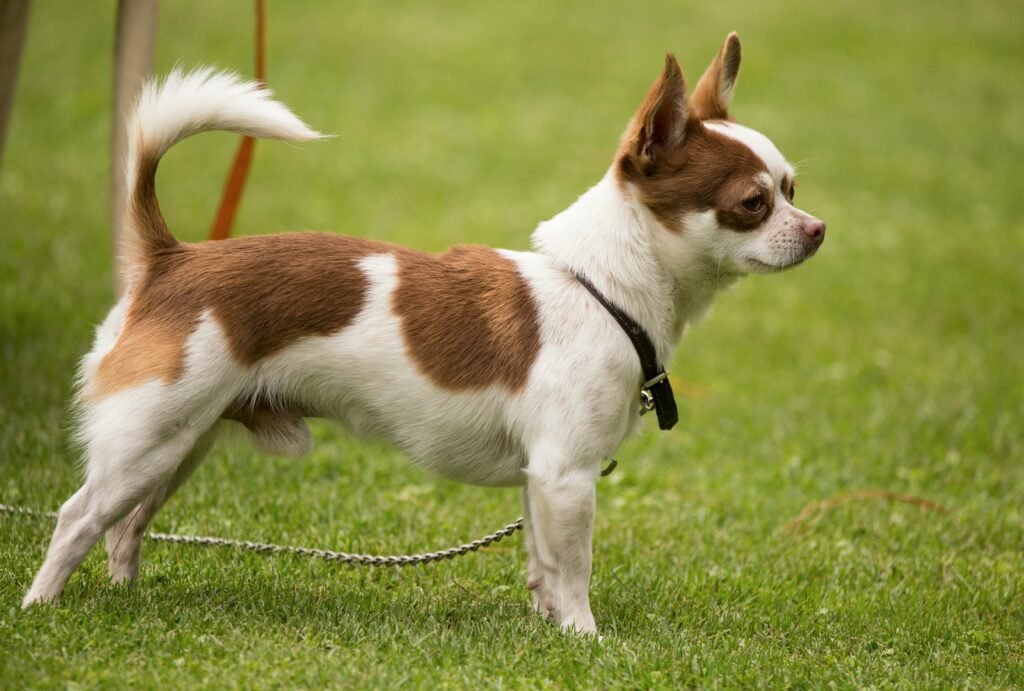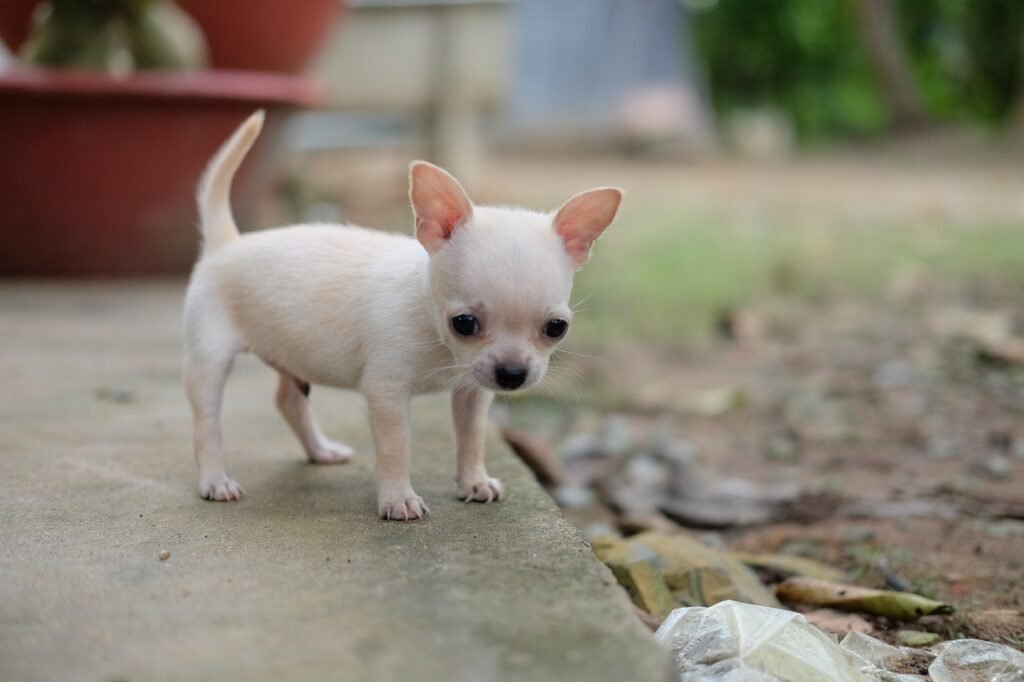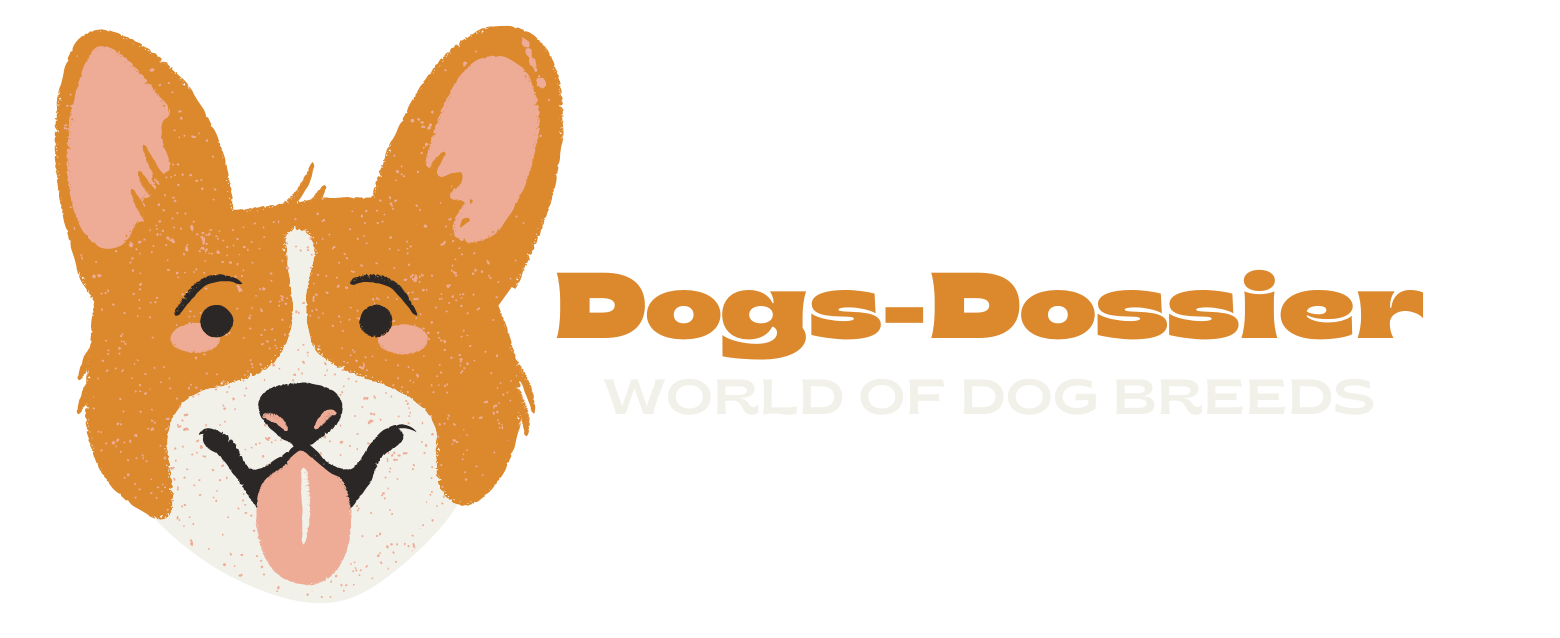Do Chihuahuas Have Curly Tails? Unveiling the Mystery!
Chihuahuas, those tiny but mighty canines, are a popular breed known for their small size and big personality.
Whether you’re a seasoned Chihuahua owner or considering bringing one into your home, understanding the unique traits of this breed, including their tails, is essential.
So, do Chihuahuas have curly tails? Let’s dive into the details and find out!
Chihuahua Breed Characteristics
Chihuahuas are famous for their diminutive stature, usually weighing between 2 to 6 pounds and standing about 6 to 9 inches tall. Despite their small size, they are full of energy and personality.
These little dogs are known for their loyalty, alertness, and sometimes feisty temperament. They come in two coat varieties: smooth and long-haired, each requiring different grooming needs.

Understanding Chihuahua Tails
Chihuahuas have distinctive tails that add to their overall charm and personality. Typically, a Chihuahua’s tail is moderately long and carried either in a sickle shape or arched over their back.
The tail’s appearance and position can vary significantly among individual dogs, reflecting their unique genetic makeup and heritage. Understanding the different tail types and what they signify can help owners better care for their Chihuahuas and recognize their emotional states.
Typical Tail Appearance
The typical tail appearance of a Chihuahua is quite distinctive. Most commonly, their tails are moderately long, tapering towards the end, and covered in a smooth or long-haired coat, depending on the Chihuahua’s variety.
When relaxed, the tail usually hangs down, but when alert or happy, it is carried in a sickle shape or slightly curved over the back. This tail posture is not only aesthetically pleasing but also helps communicate the Chihuahua’s mood and intentions.
Variations in Tail Types
Chihuahuas can exhibit a variety of tail types, ranging from straight to slightly curled or arched. While the classic sickle-shaped tail is most common, some Chihuahuas may have tails that curl more tightly, forming a semi-circle over their back.
On the other hand, some may have tails that are almost straight with just a slight curve at the end. These variations are influenced by genetic factors and are perfectly normal, contributing to each Chihuahua’s unique look and personality.
Do Chihuahuas Have Curly Tails?
While Chihuahuas are not primarily known for having curly tails, there is a range of tail shapes found within the breed. Typically, their tails are either straight or slightly curved, often carried in a sickle shape over their back.
However, some Chihuahuas do exhibit tails with a slight curl. This variation is perfectly normal and is influenced by the dog’s genetic background. Understanding these differences can help owners appreciate the unique attributes of their pets.
Common Tail Shapes in Chihuahuas
Common tail shapes in Chihuahuas include straight, slightly curved, and semi-curly. The straight tail is usually carried high but relaxed, hanging down when the dog is at ease. The slightly curved tail is more common and is often seen arched over the back, giving a distinctive and proud appearance.
A semi-curly tail, while less common, can also be found and adds to the individuality of each Chihuahua. These variations reflect the diverse genetic heritage within the breed.
Curly Tails vs. Straight Tails
Curly tails and straight tails each have their distinct characteristics and implications. A straight tail typically signifies a classic look, often preferred in dog shows and breed standards. Curly tails, on the other hand, are less common but can be equally charming.
They might not curl as tightly as in breeds like Pugs or Shiba Inus, but a slight curl can still be present. While straight tails are more conventional, a curly tail does not detract from a Chihuahua’s health or demeanor and often adds to their unique personality.
Genetics Behind Tail Shapes
The shape of a Chihuahua’s tail is largely determined by genetics. Various genes interact to influence whether a Chihuahua’s tail will be straight, slightly curved, or somewhat curly. Understanding these genetic factors helps breeders and owners predict and appreciate the diversity in tail shapes.
Hereditary patterns play a significant role, meaning the tail shape can often be traced back through a Chihuahua’s lineage, offering insights into the breed’s unique traits and characteristics.
Genetic Factors Influencing Tail Shape
Genetic factors influencing tail shape in Chihuahuas are complex and multifaceted. Specific genes responsible for skeletal structure and muscle development can impact how a tail forms and is carried.
These genetic influences are inherited from both parents, meaning that the combination of genes from each parent determines the ultimate shape of the tail. Selective breeding practices also play a role in emphasizing certain tail shapes over generations.
Hereditary Patterns in Chihuahuas
Hereditary patterns in Chihuahuas reveal much about their tail shapes and other physical traits. By studying a Chihuahua’s pedigree, breeders can predict the likelihood of certain tail shapes appearing in offspring.
Traits such as a sickle-shaped or semi-curly tail are often passed down through generations, showing a clear hereditary pattern. This genetic predictability helps maintain breed standards and allows for a better understanding of how specific traits, including tail shape, are inherited in Chihuahuas.
Comparing Tail Shapes with Other Breeds
When comparing tail shapes, it’s fascinating to see how different breeds exhibit unique characteristics. While Chihuahuas typically have straight or slightly curved tails, some breeds are known for their distinctly curly tails.
This comparison highlights the diverse genetic traits among dog breeds and underscores the uniqueness of the Chihuahua’s tail structure.
Breeds with Naturally Curly Tails
Several breeds are well-known for their naturally curly tails. Breeds such as Pugs, Shiba Inus, and Akitas often have tightly curled tails that rest over their backs. These curly tails are a result of specific genetic factors that cause the tail to form a tight loop.
Unlike Chihuahuas, these breeds have been selectively bred over generations to enhance and maintain their characteristic curly tails, making this trait a defining feature.
Differences and Similarities with Chihuahuas
While Chihuahuas and curly-tailed breeds like Pugs or Shiba Inus differ in their typical tail shapes, there are still some similarities. Both types of tails serve as important tools for communication, expressing emotions such as happiness, excitement, or anxiety.
However, the main difference lies in the degree of curliness. Chihuahuas may have slightly curved or semi-curly tails, but they rarely exhibit the tight, full curls seen in breeds specifically known for this trait.
These differences highlight the unique genetic makeup and selective breeding practices that distinguish Chihuahuas from other breeds with more pronounced curly tails.

Health Implications of Tail Shapes
The shape of a Chihuahua’s tail can have various health implications. While most tail shapes do not pose significant health risks, certain shapes can be more prone to specific issues.
Understanding these potential health impacts can help Chihuahua owners ensure their pets remain healthy and comfortable, regardless of their tail type.
Impact of Tail Shape on Health
The impact of tail shape on a Chihuahua’s health is generally minimal, but it can vary based on the specific tail type. For instance, a sickle-shaped or straight tail usually poses no health problems.
However, tails that are extremely curled or kinked can sometimes lead to issues such as skin irritations, infections, or even restricted movement. Regular grooming and proper care can mitigate most of these concerns, ensuring that a Chihuahua’s tail remains healthy and functional.
Potential Issues with Curly Tails
Curly tails, while charming, can occasionally lead to health problems. In breeds with tightly curled tails, there is a higher risk of skin infections due to the folds and creases where moisture and dirt can accumulate. Although Chihuahuas generally do not have tightly curled tails, those with more pronounced curls may still be susceptible to similar issues.
Additionally, a very curly tail can sometimes interfere with normal movement or cause discomfort if the curl is too tight. Monitoring the tail’s condition and seeking veterinary advice if any issues arise can help prevent and address these potential health concerns.
Tail Expressions and Communication
Chihuahuas, like all dogs, use their tails as an essential tool for communication. The position and movement of a Chihuahua’s tail can convey a wide range of emotions and intentions, making it an important aspect of their body language.
Understanding these tail expressions can help owners better interpret their Chihuahua’s feelings and reactions in various situations.
How Chihuahuas Use Their Tails to Communicate
Chihuahuas use their tails to express emotions and communicate with both humans and other animals. A wagging tail often indicates happiness and excitement, showing that the dog is pleased or eager.
Conversely, a tail tucked between the legs can signal fear or submission, indicating that the Chihuahua is feeling threatened or anxious. By observing these tail movements, owners can gain valuable insights into their Chihuahua’s emotional state and respond appropriately.
Tail Positions and Meanings
The position of a Chihuahua’s tail can convey different meanings:
- High and Wagging: A tail held high and wagging briskly typically signals happiness and excitement. This is often seen when the Chihuahua is greeting someone or playing.
- Horizontal and Stiff: A tail held straight out, horizontal to the ground, and stiff can indicate alertness or curiosity. The Chihuahua might be focused on something interesting or potentially threatening.
- Tucked Between Legs: A tail tucked between the legs signifies fear, submission, or anxiety. This position shows that the Chihuahua is feeling scared or insecure and may need reassurance.
- Relaxed and Down: A tail that is relaxed and hanging down generally indicates that the Chihuahua is calm and at ease. This position is often seen when the dog is resting or content.
By paying attention to these tail positions, Chihuahua owners can better understand their pet’s emotional cues and create a more responsive and empathetic relationship with their furry friend.
Caring for Your Chihuahua’s Tail
Proper care for your Chihuahua’s tail is crucial for their overall well-being. Regular grooming and attentive handling of any injuries ensure that their tail remains healthy and functional.
Understanding how to care for your Chihuahua’s tail can prevent common issues and keep your pet comfortable and happy.
Grooming Tips for Chihuahua Tails
Grooming is essential for maintaining a healthy Chihuahua tail. For long-haired Chihuahuas, regular brushing helps prevent tangles and mats, which can cause discomfort and skin problems. Using a gentle brush or comb designed for small dogs can make this task easier.
For short-haired Chihuahuas, occasional brushing is still beneficial to remove loose hairs and keep the tail clean.
Additionally, it’s important to check for any signs of irritation, fleas, or ticks during grooming sessions. Keeping the tail clean and well-groomed reduces the risk of infections and promotes healthy skin and fur.
Handling Tail Injuries
Handling tail injuries promptly is important to prevent complications. If your Chihuahua injures their tail, the first step is to clean the wound gently with a mild antiseptic solution to prevent infection. Avoid using harsh chemicals that could irritate the skin.
After cleaning, apply a pet-safe antibiotic ointment and cover the injury with a bandage if necessary to protect it from further harm. Monitor the injury closely and keep your Chihuahua from licking or biting the affected area.
If the injury seems severe, such as a broken tail or deep wound, seek veterinary care immediately. Proper treatment and care will help your Chihuahua’s tail heal quickly and prevent long-term issues.
Tail Docking in Chihuahuas
Tail docking in Chihuahuas, while less common today, has historical roots and involves various ethical considerations.
Understanding the history and current practices surrounding tail docking helps inform the debate about its necessity and impact on the breed. As societal attitudes towards animal welfare evolve, so too do the practices and regulations concerning tail docking.
Historical Context of Tail Docking
Historically, tail docking was performed on many dog breeds, including Chihuahuas, for various reasons. In the past, docking was thought to prevent injuries, particularly in working dogs, and was also done for cosmetic purposes to adhere to breed standards.
Some believed that docking reduced the risk of rabies and strengthened the dog’s back. For Chihuahuas, docking was less about functional necessity and more about aesthetic preferences set by breed enthusiasts.
Over time, these practices have been scrutinized and reevaluated in light of modern veterinary science and animal welfare standards.
Current Practices and Ethical Considerations
Today, tail docking is a controversial practice with significant ethical considerations. In many countries, including much of Europe, tail docking is heavily regulated or banned unless performed for medical reasons.
The American Veterinary Medical Association (AVMA) opposes cosmetic tail docking and advocates for it to be done only when medically necessary. Ethical considerations focus on the potential pain and distress caused to the puppy, as well as the question of whether cosmetic alterations should be performed on animals.
As a result, many breeders and pet owners opt to leave Chihuahuas’ tails natural, promoting a more humane approach to animal care and preserving the breed’s natural characteristics.

Myths and Misconceptions
There are many myths and misconceptions about Chihuahua tails that often lead to confusion among pet owners and enthusiasts. These misunderstandings can influence how people perceive and care for their Chihuahuas.
By addressing these myths and clarifying the facts, we can better appreciate the true nature of this charming breed.
Common Myths About Chihuahua Tails
One common myth is that all Chihuahuas should have perfectly straight tails to be considered purebred. In reality, Chihuahuas can have a variety of tail shapes, including straight, slightly curved, or semi-curly.
Another myth is that a curled tail indicates that a Chihuahua is a mixed breed. While some tail shapes may suggest a mix, a slight curl can still be found in purebred Chihuahuas due to natural genetic variation.
Additionally, some people believe that tail docking is necessary for health reasons, which is generally not true for Chihuahuas as their tails do not typically interfere with their health or function.
Clarifying Misconceptions
Clarifying these misconceptions helps in understanding and appreciating the diversity within the Chihuahua breed. First, it’s important to recognize that tail shapes can vary and are influenced by genetics, not purity of breed.
Accepting this variation helps reduce unnecessary concerns about a Chihuahua’s lineage. Second, while tail docking was once common, it is now largely viewed as unnecessary and unethical unless medically required.
Emphasizing the natural state of a Chihuahua’s tail promotes better animal welfare and encourages more humane treatment of pets. By debunking these myths, owners can focus on providing the best care for their Chihuahuas, respecting their natural traits and individuality.
Training and Tail Behavior
Understanding how tail behavior relates to training is essential for effectively communicating with your Chihuahua.
By recognizing the significance of tail movements and incorporating tail-related behaviors into your training routine, you can strengthen your bond with your pet and achieve desired results more efficiently.
Training Tips for Tail-Related Behaviors
When training your Chihuahua, pay attention to their tail movements as they can provide valuable insights into their emotional state and receptiveness to training. For example, a wagging tail often indicates engagement and enthusiasm, signaling that your Chihuahua is enjoying the training session.
Conversely, a tucked tail may suggest fear or anxiety, indicating that your pet may need reassurance or a break from training. Tail position can also help you gauge your Chihuahua’s level of focus and concentration.
By incorporating positive reinforcement techniques and tail-aware training methods, you can create a positive learning environment for your Chihuahua and enhance their training experience.
Understanding Tail Wagging During Training
Tail wagging during training is a common behavior that can convey different meanings depending on the context. While a wagging tail typically indicates happiness and excitement, it’s essential to consider other body language cues to interpret your Chihuahua’s mood accurately.
Tail wagging accompanied by relaxed body posture and attentive behavior suggests that your Chihuahua is engaged and receptive to training. On the other hand, if your Chihuahua’s tail is wagging nervously or erratically, it may indicate stress or confusion, signaling that you may need to adjust your training approach or provide additional support.
By understanding tail wagging in the context of training, you can better communicate with your Chihuahua and foster a positive training experience for both of you.
Chihuahua Tail Facts
Chihuahua tails are full of fascinating and unique characteristics that add to the charm of this beloved breed. From their expressive wagging to their diverse shapes, there’s much to learn and appreciate about Chihuahua tails.
Here are some fun facts and trivia about these adorable appendages:
Fun Facts About Chihuahua Tails
- Despite their small size, Chihuahuas often have tails that are proportionally long and expressive, adding to their endearing appearance.
- Chihuahuas are known for their enthusiastic tail wagging, which can range from gentle wiggles to full-body wags when they’re excited or happy.
- The shape of a Chihuahua’s tail can vary widely, with some having straight tails, while others may have tails that curl slightly or rest over their backs in a sickle shape.
- Chihuahuas use their tails not only for communication but also for balance and agility, especially during playful antics or agility exercises.
- Tail wagging is just one aspect of a Chihuahua’s expressive body language, which also includes ear position, facial expressions, and vocalizations.
Unique Traits and Trivia
- Chihuahuas are known for their big personalities and bold attitudes, which are often reflected in the way they carry themselves, including their tail carriage.
- The tail is an essential part of a Chihuahua’s identity, and breed enthusiasts often take pride in the unique characteristics of their Chihuahua’s tail, whether it’s straight, curved, or slightly curled.
- Despite their small size, Chihuahuas are agile and active dogs, and their tails play a crucial role in their mobility and communication with other dogs and humans.
- Chihuahuas have been depicted in various works of art and popular culture, often with exaggerated features, including their tails, which further emphasizes their iconic status as a beloved breed.
By appreciating these fun facts and unique traits, Chihuahua owners can deepen their understanding and connection with their furry companions, celebrating the individuality and charm of each Chihuahua’s tail.
FAQs: Chihuahua
Do all Chihuahuas have curly tails?
No, not all Chihuahuas have curly tails. Their tails can vary in shape, from straight to slightly curved or semi-curly.
Can a Chihuahua’s tail shape change over time?
While a Chihuahua’s tail shape is largely determined by genetics, it can appear to change slightly as they grow and develop. However, significant changes in tail shape are uncommon.
How can I tell if my Chihuahua has a healthy tail?
A healthy tail is free of lumps, sores, or bald spots. It should move easily and not cause pain to your Chihuahua. Regular grooming and checks can help maintain tail health.
What should I do if my Chihuahua’s tail gets injured?
If your Chihuahua’s tail gets injured, clean the wound gently and seek veterinary care. Prompt treatment can prevent infections and other complications.
Are curly tails more prone to health issues?
Curly tails can sometimes be more prone to issues like skin infections or injuries due to their shape. Regular grooming and monitoring can help prevent these problems.
Conclusion
In conclusion, while Chihuahuas don’t typically have tightly curled tails like some other breeds, their tails can vary from straight to slightly curly.
Understanding the genetics, health implications, and communication aspects of their tails can enhance your care and appreciation of these delightful dogs. Each Chihuahua is unique, and their tail is just one of many charming features that make them special.





